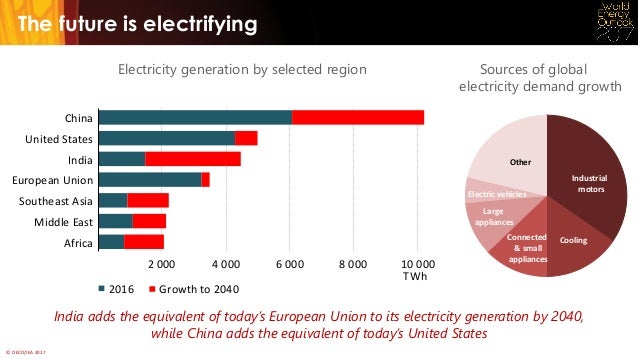Between 2015 and 2040 world energy consumpt ion increases by 28 in the ieo2017 reference case with more than half of the increase attributed to non oecd asia including china and india where.
World energy consumption 2017 ppt.
The united states energy information administration eia regularly publishes a report on world consumption for most types of primary energy resources.
Four large scale shifts in the global energy system set the scene for the world energy outlook 2017.
The effects of economic assumptions on energy consumption are addres sed in the high and low economic growth cases which assume compound annua l growth rates for u s.
World energy consumption rises 28 between 2015 and 2040 in the.
This statistic represents worldwide electricity consumption between 1980 and 2017.
World consumption of nuclear electricity was 592 million tons of oil equivalent in 2016 accounting for 4 5 percent of the world energy consumption.
The global energy trends 2017 analyses the world energy statistics from their independent and trusted energy databases providing first overview trends figures and conclusions of the world energy situation for the main markets.
A report by the international energy agency.
From 2005 to 2016 world consumption of nuclear electricity.
For 2013 estimated world energy consumption was 5 67 10 20 joules or 157 481 twh.
28 1 percent of the world energy consumption.
Gross domestic product of 2 6 and 1 6 respectively from 2016 40 co mpared with 2 2 annual growth in the reference.
China analysis and key findings.
The per capita energy consumption is estimated to be a very modest 530 kg of oil equivalent kgoe while the world average is approximately 1800 kgoe.
Change in oil demand in china compared to other countries in the new policies scenario.
According to the iea the total world energy consumption in past years was 143 851 twh in 2008 133 602 twh in 2005 117 687 twh in 2000 and 102 569 twh in 1990.
By 2040 electricity becomes the leading source of final energy consumption in china overtaking coal in the late 2020s and oil shortly thereafter.
In 2017 the world s electricity consumption amounted to approximately 22 3 trillion kilowatt hours.
This publication is free after login.
The rapid deployment and falling costs of clean energy technologies the growing electrification of energy the shift to a more services oriented economy and a cleaner energy mix in china and the resilience of shale gas and tight oil in the united states.










